Iran medical plant
Iran has a rich and diverse cultural heritage, consisting of a complex traditional medicine deeply rooted in the history of the territory that goes back to the Assyrian and Babylonian civilizations. The ethnomedical practices that can be identifiable nowadays derive from the experience of local people who have developed remedies against a wide range of diseases handing down the knowledge from generation to generation over the millennia. iran medical plant
Traditional medicine practices represent an important source of inspiration in the process of the development of new drugs and therapeutic strategies. In this context, it is useful to determine the state of the art of ethnomedical studies, concerning the Iranian territory, and of scientific studies on plants used in traditional Iranian medicine. Data regarding 245 plants used in Iranian ethnomedical practices and scientific studies conducted on 89 plants collected in the Iranian territory have been reported.

All of the scientific studies here reported draw inspiration from traditional medicine. The World Health Organization ( WHO ) has repeatedly called for an intensification of the scientific validation processes of traditional medicines intended as an important contribution to public health in various parts of the world. The process of study and validation of Iranian ethnomedical practices appears to be at an early stage.
In most countries, extended, medicine traditional in the dimensions of the support of the government were taken and share good of ensuring the health of people and the country’s health system has taken over. iran medical plant
The diversity of plant species and some unique species of Iran has made important pharmaceutical companies in developed countries highly dependent on the raw materials of some medicinal plants such as saffron, cumin, thyme and savory.
Import of medicinal plants to Iran
Some medicinal plants are imported from different countries in the form of essential oils. These plants are even imported to Iran as spices and are sold. Imported medicinal plants such as turmeric, pepper, asparagus, black pepper, cumin and so on. These plants, which are mostly imported as spices and essential oils, are imported from countries such as Afghanistan, India and Pakistan.
Despite the richness of Iran in the production of medicinal plants, there are still whispers of imports in this field, but due to the richness of Iran in medicinal plants, the import of medicinal plants has greatly decreased.
Informal import ( contraband )
According to unofficial statistics, several thousand tons of medicinal plants have been smuggled into the country annually, most of them through areas bordering Pakistan and Afghanistan, which in the last two years due to control over points. Cross-border, these imports are severely restricted.
Herbs such as senna leaves, sour tea, gums used in traditional medicine, anise, dill seeds, basil and … are some of these medicinal plants that were recently smuggled into Pakistan. Unfortunately, there are no statistics on this type of import. iran medical plant
Export of medicinal plants
In 1998, Iran ranked first in the export of medicinal plants, and in 2003, Iran was the fifth largest exporter of medicinal plants, which dropped to 32 due to some problems, and now Iran has the largest exports of saffron, damask rose, liquorice and coriander. 80 to 90% of the export of medicinal plants from the country was in bulk and only 10% in the form of essential oils and extracts.
The most important Iranian medicinal plants for export in recent years include :
- Cumin
- thymes
- dracocephalum
- anise
- chamomile ( Chamomile flower specifications )
- Plantago ovata
- yarrow ( yarrow flower specifications )
- hollyhocks or Mallow ( Mallow flower specifications )
- hyssop
- sage
- tragacanth
- asafoetida ( asafoetida specifications )
- licorice
- sophora
- myrtle
- jujube
- viper’s-buglosses
- fuller’s earth
- galbanum ( galbanum specifications )
- allium
- mastic
- artichoke ( artichoke specifications )
- dorema
- oak tree
- echinops ( echinops flower specifications )
- henna
- astragalus
These plants export to Germany, USA, England, France, Hungary, Pakistan, India, China, Turkey , Bahrain, Kuwait, Qatar, Canada, Sweden. Most of Iran’s medicinal plants are exported to Pakistan and the UAE, followed by Germany, Japan and China . iran medical plant
Major exports of medicinal plants
Saffron, liquorice, natural gums and distillates and roses are the most exported items of Iran to other countries. The highest level of cultivation of medicinal plants belongs to saffron, which is cultivated 108 thousand hectares of saffron in the country. After saffron, cumin, allium stipitatum , damask rose, dahlia, coriander and liquorice also had the highest area of cultivation and export .
The main problems we face in the field of export of medicinal plants
-
Weakness in branding
Considering the high potential of the country in the field of medicinal plants production, one of the main problems of the country in the field of medicinal plants production is the lack of “brand”. In other countries, our domestic plants are branded and exported at twice the cost.
One of the major problems in the growth and development of medicinal plants is the marketing of its products. Proper marketing causes products to be produced based on the needs of consumers and provided to them in a hygienic and desirable way. Marketing operations include warehousing, shipping, grading, packaging and conversion. Producers, intermediaries and consumers also play a major role in the marketing organization.
-
Packaging of medicinal plants
Due to the lack of attention to the packaging sector, the export of these plants in Iran is done only in bulk and with very little profit. If it is packed in other countries and sold at a higher price in the name of the same country to the world markets. Like the UAE.
Lack of proper packaging any plant during the process of distribution, transportation and export of medicinal plants reduces the quality of Iranian medicinal plants compared to the products of other countries and this leads to the loss of profitable and dynamic global markets for our country.
Some of the required medicinal plants are imported into the country, which reduces their healing properties due to improper supply. Most dried herbs are imported and therefore it takes a long time to collect them until they reach the consumer. iran medical plant
For this reason, the healing properties of these plants are greatly reduced and in most cases completely eliminated. The ineffectiveness of medicinal plants is often due to the age of the plant used. Because with the passage of the plant from a certain age, its therapeutic and healing effects disappear.
Unfortunately, due to the lack of proper packaging for medicinal plants and the neglect of it, most people do not know about it and ignore it. The packaging of medicinal plants should be designed in such a way that it is in a good position not only economically but also in terms of health.
Since taste is directly related to colors, color and even the type of packaging can be used to package medicinal plants.
for example :
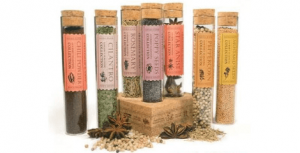
There are plants that taste bitter and spicy, and according to the content inside the package of medicinal plants and its properties, you should choose a color that the customer communicates with and has a sense of desire to use that product. Use green and yellow or red and orange.
This product includes a package that the audience, when they see it, before they understand what the ingredients are, can recognize its taste. For example, for this product, we use bold colors of blue, olive green, 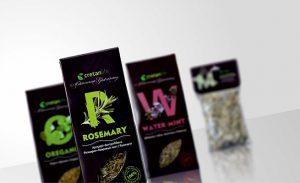 burnt brown and purple to Its taste and healing properties are instilled in the viewer.
burnt brown and purple to Its taste and healing properties are instilled in the viewer.
But we must also pay attention to the fact that in addition to using these colors that we choose according to their taste and healing properties, we must use colors that are complementary and do not instill fear and panic of the product at once. In such a way that it is counter-advertised and the audience escapes from it.
-
Raw sale
The neglect of the medicinal plants industry is such that raw medicinal plants are exported to other countries and then imported as processed products and herbal medicines. This is while regulating and the production and supply of medicinal plants can have a good value for the country.
Selling raw materials can be considered the real meaning of losing wealth. Just as the sale of crude oil is known as the sale of the wealth of nations, any other product, if exported in crude form, will be considered lost wealth. Raw materials get their real price after any deformation and conversion into new products.
If the sale of raw materials is not managed, raw materials such as medicinal plants are exported from our country to other countries and there they gain their identity by turning into medicinal products. This event will ultimately harm our country. iran medical plant
for example :
We can mention saffron, which is exported in bulk to other countries. This product gets a multiplier price only by allocating beautiful packaging and standard. At the same time, in these cases, our country, in addition to being deprived of financial benefits, will face another loss, and that is that other countries will register our country’s raw materials in their own name and export them.
Despite the sale of raw materials for the cultivation of medicinal plants, it is still facing economic problems today. Because when these plants are sold in bulk, it will not be profitable for the producer. While turning it into medicinal products will bring good added value.
List of authorized and unauthorized herbal and medicinal products for export
In a circular to customs across the country, Iran’s customs announced the criteria for the export of medicinal products and plants. ; In this list, types of plants and medicinal products are classified into two categories items.
Unauthorized items ( prohibited )
- Rhizome
- Salep
- Bulb and fritillaries
- Bulb of daffodil ( narcissus )
- hollyhock
- Chicory
- Wild rhubarb
- Cow-herbe or Cowsoapwort
- degumming or
madder - The bark of prunus mahaleb tree
- Valerian
- Zhumeria
- Biebersteinia
- colchicum
- Holly and ruscus
- Wild iris
- Wild dahlia
- Licorice
- Bulbs ( including Allium )
- Redcurrant
- Dorema aucheri
- Eremurus root
- Yew
- Buxus
- Red poppy flower ( Red poppy specifications )
- Types of tulips
- Lilium ledebourii
- Hyacinth
- All roots and bark of forest trees and shrubs ( except conditionally permitted items )
Permitted items ( conditional )
- Wild celery ( Kalus )
- Wild barberry ( forest )
- Hedysarum
- Cotoneaster Rockspray
- Lemon balm
-
Water germander - Maidenhair
- Eagle fern
- Manna of Tamarix
- Willow manna
- Mastic
- Zedo Gum , Persion Gum
- Wild pear
- Borage
- Daffodil ( narcissus flower )
- Myrtle ( myrtus communis ) leaves
- Caraway
- Prunus mahaleb
- Seidlitzia rosmarinus
- Wild pistachio
- Melilotus officinalis fruit
- Thyme
- Oak tree
- Wild walnuts and hazelnuts
- Bitter and sweet asafoetida
- Judas tree wood
- galbanum
- Tragacanth
- Dorema ammoniacum
- Astragalus sarcocolla
- Caper bush or common capper
- Wild almond ( mountain )
- St. John’s wort ( Hypericum perforatum )
- Ivy
- Moss or duckweed
- Fern ( fern specifications )
- Bracken ( Pteridium aquilinum )
- Satureja khuzestanica
- Yarrow
- Violets
- Common sage ( Salvia officinalis )
- Chicory flower
- Corn flower ( Corn flower specifications )
- Hymenocrater
- Safflower
- Madder ( Rubia tinctorum fruit )
- Flax seed
- Alyssum ( Alyssum homalocarpum Boiss )
- Plantago ovata
- Anise
- Melissa Officinalis
- Bay laurel
- Pistacia atlantica and oak fruit
- Gall oak or Quercus infectoria or Aleppo oak
- Mallow
- Plantago lanceolata
- Chamomile
- Common fumitory or Earth smoke
- Lavender ( Lavender flower specifications )
- Eucalyptus leaves ( Eucalyptus specifications )
- Echinops
- Terebinth gum
- Danae racemosa
- All seeds and fruits of forest trees and shrubs
- Allium
- Leaves and branches of Ruscus
- Acanthus ( prickly artichoke )
- Edible mushrooms ( harvested from pastures )
Notice :
- Export of conditionally authorized items requires obtaining a license from the Forests, Rangelands and Watershed Management Organization (Office of Planning, Budget and Project Coordination) and the Ministry of Jihad Agriculture.
- The export of rose water and plant essential oils does not require a permit from the Forests, Rangelands and Watershed Management Organization.
- The export of Liquorice powder and extract is unrestricted, but the transportation of Liquorice root must be done with the coordination and permission of the General Department of Natural Resources and Watershed Management of the province. iran medical plant
Obtain the necessary licenses for the production and export of medicinal plants
To get started, you need to get the necessary permits from several institutions. Such activities become more strict in this regard because they have a direct relationship with the health and well-being of people in the community. If investors want to produce industrially and mass-produced, they must obtain the necessary permits from the Ministry of Industry, Mines and Trade, the Ministry of Health, Treatment and Medical Education ( Deputy Minister of Food and Drugs ) and the Ministry of Jihad-e-Agriculture.
In addition, certificates and approvals must be received from environmental organizations and the standard office.
If it is to partner with knowledge-based companies, the approval of the Vice President for Science and Technology must also be attached. At the same time, in order to renew the construction and operation certificates, they should be renewed in time.
If you want more profit
If you are looking for more profit, do not forget the processing of medicinal plants, which not only increases the added value of your products, but also has much less storage problems, and you do not have to sell your product below the price due to the difficult storage conditions of some medicinal plants. Be harmed.
The capital required to build a production unit in the field of medicines and herbal products is very expensive and requires more than 2 billion tomans of initial capital. Of course, some companies that were established in previous years have started with less capital. The space required for this work is at least 500 square meters plus storage. iran medical plant
Most of the money is spent on preparing and equipping the production unit to form a new production line. Of course, it should be borne in mind that it is not enough to produce only one product because it is not economical at all. Most companies have their own subsidiaries that operate as covered. Because they can meet part of the financial needs in this way. However, due to the profitability of these products and herbal medicinal products, setting up a production line requires sufficient capital and expertise of its employees.
Analysis of commercial status of medicinal plants in global markets
Medicinal plants are known in the world customs with the tariff code (HS Code) number 1211 . This code includes the group of plants, plant components, seeds and fruits, of the types that are mostly used in perfumery, pharmacy, for insecticides, parasites or the like; It is fresh, chilled, frozen or dried, even cut, chopped or powdered. Knowledge of export medicinal plants is one of the most important factors of export.
Summary
Although so far due to the lack of a systematic and codified structure and also the lack of coordinated and integrated policies for the growth and development of the medicinal plants industry, no serious and effective action has been taken to benefit from God-given capacity and potentials of medicinal plants in the country. The growing global acceptance of the use of herbal medicines, as well as the attention and efforts of developed countries to invest and mass-produce medicinal plants, is essential. iran medical plant
Considering the production capacity of medicinal plants in the country and also the competitive advantage of this industry in the economy, to enter the arena of such a large economy, it has already established the necessary investments in the value chain to produce maximum added value of medicinal plants. And take advantage of its advantages and opportunities to develop non-oil exports, employment growth, revenue generation and … countris .
Notice : this article has been translated by google translate , if you have any questions or need more information Please contact us by writing a comment on this page.
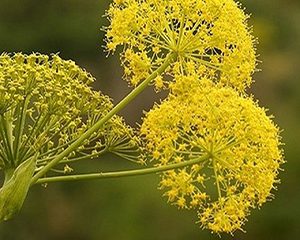
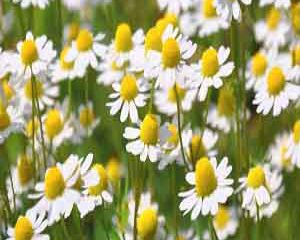
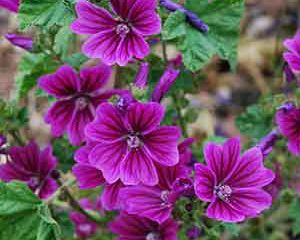
0 Comments